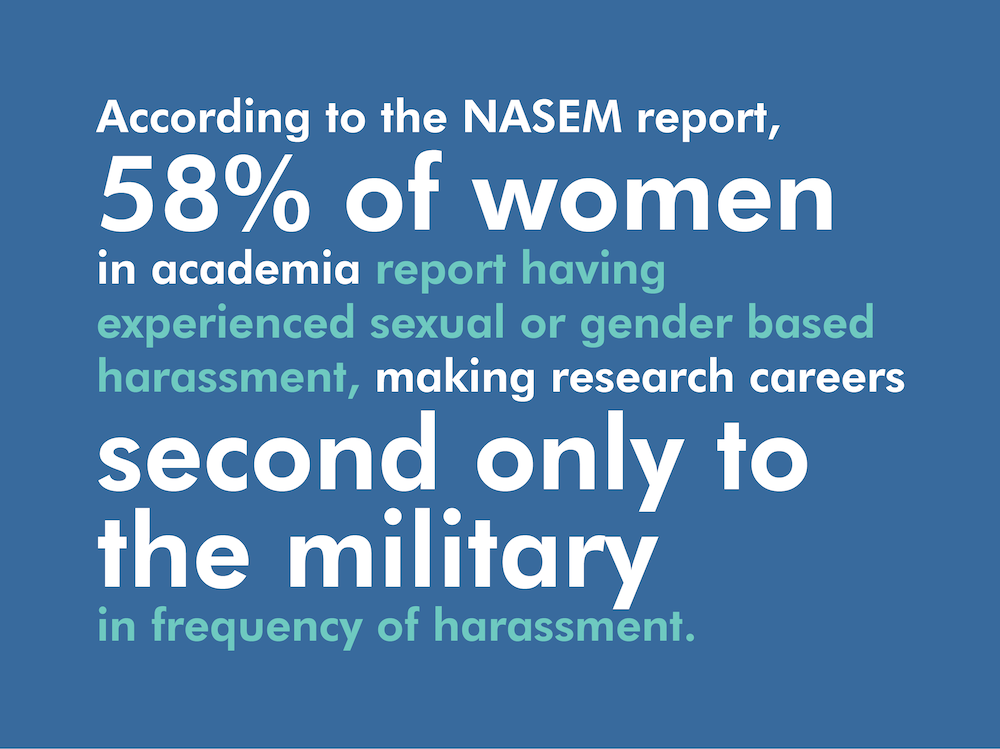Harassment, Discrimination and Bullying
Harassment, discrimination, and bullying are rampant in research workplaces. This is a huge factor in the underrepresentation in science of women, people of color, and LGBTQ people, especially underrepresentation in research relative to the number of degrees granted.
According to the NASEM report, 58% of women in academia report having experienced sexual or gender based harassment, making research careers second only to the military in frequency of harassment. The report also found that institutional offices assigned to handle cases of harassment do little to prevent or remedy the problem, but rather focus on reducing institutional liability.
The NIH released its own internal survey on harassment in 2020 showing extremely worrying statistics.
• 35% of fellows had experienced harassment in the last 12 months.
• 54% of NIH employees experiencing harassment spoke to no one about it.
• Of those who did not report their harassment:
– 65% were concerned about career consequences if they did report
– 38% did not think that the NIH would do anything helpful if they reported
• Of those who reported their harassment, 50% said their working conditions subsequently got worse
Even the NIH’s own internal surveys show that the rampant culture of harassment, discrimination, and bullying in research workplaces are present here as well. High profile cases of misconduct and coverups by senior leadership have tarnished the reputation of the NIH, such as at NIDA in 2019.
Clearly, we cannot rely on the NIH or any other research institution to stop this type of workplace conduct using its own internal processes. By forming a union, we can win enforceable protections for fellows against harassment, discrimination, and bullying. To read more about how unions help promote equity in research workplaces, visit WorkersEquity.org.

